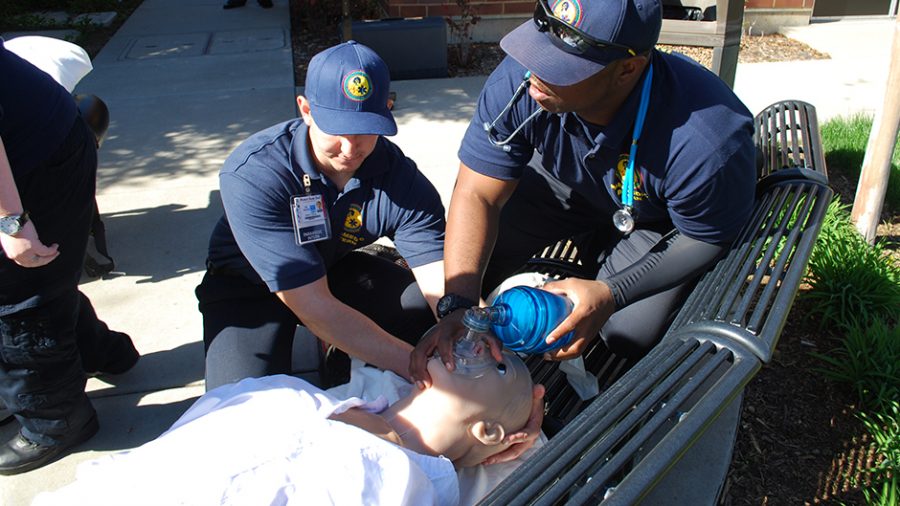EMS classes remain open as campus is closed
As one of the few classes left on campus, the EMS department is finding new ways to teach
As one of the few classes left on campus, at American River College, the EMS department is finding new ways to teach in Spring 2021. (Photo via ARC’s Website)
While the world shut down, and virtually every form of communication went online, the teachers and students with American River College’s Emergency Medical Technology, Paramedics, Nursing and Respiratory services departments have remained on campus throughout.
As the pandemic has continued to roll over the world the past year, a growing shortage of personnel has mounted among many job spectrums. One of the more crucial ones for the public has been the emergency medical field. According to an article by Government Technology, the shortage is a mixture of both a lack in competitive wages for workers as well as EMTs and paramedics also coming down with COVID-19.
As a result, colleges like ARC have had to create a hybrid classroom environment to help fill the gap in the line with new students to keep people safe during these trying times.
But how exactly has the college been able to do this?
Health professor Marisol Garcia, who is also a longtime paramedic, has to go through a long checklist of safety protocols for students to keep everyone safe. The classroom environment is now much different than it used to be.
As a professor, her classes are broken down between the lectures and the labs, with lectures being online and labs being in person. She noted that the lectures have been a struggle, as many students find it challenging to find quiet places to study in their lives, at home or work.
With the labs, her day starts an hour before her students, as she has to sanitize and prep the classroom for them before they can start. And now with social distancing, labs are broken down to 15 students at a time, which is less than half of what they used to be.
When students arrive they have to sanitize their hands, wear gloves and masks, pass a temperature screening and also fill out a questionnaire asking if they or anyone they have been with have had COVID-19 symptoms. Once that is complete then they can proceed to work in the labs.
Garcia also emphasized that the students have had to have a different mindset during the pandemic, as they are the only ones on campus.
“The students have to be mentally prepared when nobody is here, it’s very quiet, the landscaping isn’t as well kept up so the grass is much taller and some other things. [It] looks a lot like the walking dead,” Garcia said.
The medical services departments have also been working hard to bring new and innovative ways to educate students in the field and to help bring students the most training possible.
ARC Health and Paramedic Coordinator and Professor Grant Goold, discussed some trials as well as new developments with online learning that also includes the use of virtual reality education with one of his paramedic students.
With a vast majority of the classes that he teaches now online, including an eight-hour Monday lecture, Goold said that the pandemic forced its faculty to learn different styles of learning that best suit their students.
He added that he is educating a single paramedic student with an entirely virtual lab.
“This will be the first paramedic student that will have graduated without ever stepping foot in the back of an ambulance or being in a hospital,” Goold said.
Goold says he really likes the ability the virtual reality gives him, as he can modify the situation and run whatever injury he wants and can really pinpoint to train on specific things that he may have issues with.
He added that he also sees a bright future with this technique.
“I see this as one of the new futures of education and learning for medical services that will grow as virtual reality becomes more common in our world and that’s really cool,” Goold said.











